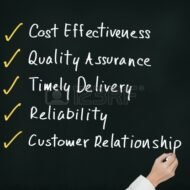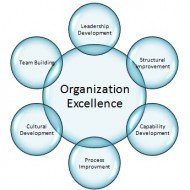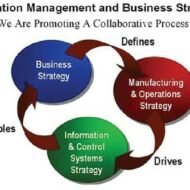Posted by Managementguru in Business Management, Marketing, Principles of Management, Strategy
on Mar 4th, 2014 | 0 comments

Creating a Niche Market for Your Product Range Abstract to Concrete Ideas: The process of new product development starts with the search for new ideas. Abstract ideas are molded in such a way to suit the market needs. Business persons who want to capture a major share of the market have to think out of the box, to tide over the competition. Small things can make a big difference. Monotonous pattern of thinking will not help you in the long run to survive and sustain in the market. The Significance of R&D: The objective is to obtain ideas for new products, new attributes for the existing products and new usage for the existing product line. Why do you think so much of investment goes into research and development? The fruits of such R and D activities are reflected in the form of improved sales turn over. Market updates on a daily basis also gives you an excellent feedback about the new products that throng the market. Think about this, it is not possible for every organization to invest such huge sums in R and D which demands technically qualified personnel to carry out the research activities and it is next to impossible that each and every firm in the market can establish the necessary infrastructure for the purpose of research. SWOT Analysis: What might be the solution? Companies generally rely on internal sources, customers, competitors, distributors, suppliers and others for new product ideas. The sales force of a firm can provide excellent inputs as they meet customers on a regular basis. Through SWOT analysis, a company can make a conscious, deliberate and systematic effort to identify opportunities that can be profitably exploited. Top management should encourage the employees to think more imaginatively to create a niche market for its product range. The management has to prioritise its objectives first and channelise the efforts of employees accordingly. Picture Courtesy : The power of Product Thinking Steps to be followed in new product development: Generation of new product ideas Screening of ideas – It serves the purpose of reducing the large number of ideas generated, to spot the good ones and drop the bad ones. Concept development and testing – An inherent idea must be developed into a product concept, should include the customer, the major customer benefits and the features defining it. Development of marketing strategy – This is helpful in launching the product at the right time and right place to the right people. Business analysis – A review of cost versus profit analysis, estimated size and growth rate of the market segment, estimated sales and market share for the new product in the light of financial feasibility. Development of the product – If the business analysis gives a satisfactory report as to the rate of return on investment and pay back period, the R and D department goes ahead with manufacturing the prototype which is the preliminary version of the final product. Test marketing – It provides an opportunity to understand market response to the new product and its proposed marketing programme in a more realistic market environment than in simulated conditions. Commercialization – The product is released into the market, distribution channels are established, thus initiating its life cycle. The success of new products can be attributed to two aspects, one is creativity and the other being...

Posted by Managementguru in Business Management, Marketing, Principles of Management
on Mar 3rd, 2014 | 0 comments

Customer Centric or Product Centric Customer centric: refers to the orientation of a company to the needs and behaviors of its customers. Product centric: refers to the orientation of a company towards manufacturing and improving the product line. All products that enter the market are not given the kind of welcome which only certain products are able to enjoy. Why is that only few products are top notch and others average performers? The answer is very simple, you need to be customer centric rather focusing on improving your product and its range. What is the fun in making products that go bland over a period of time? Creating an appealing product does not suffice the requirements of the consumers. Understanding the consumer, his needs and preferences makes you a good marketer. “What people want to buy and what you want people to buy are entirely two different entities.” Customer Wanton and Preferences Marketing is a concept that talks about creating a favorable environment or identifying a niche where you can sell your products comfortably or where the products can sell themselves provided the focus is on the target customer. What companies do now in the name of marketing is nothing but product promotion that exhausts huge chunk of money from the management’s treasury. Business schools have a great role to play in idealizing these concepts for the better understanding of management graduates, make them deliver the right choice of action in real time environment. Marketing starts right from developing a prospective business idea into a concrete business plan followed by branding and promotions. But the product base has to be built upon customer wanton and preferences. Indigenous Products The soft drink “Bovonto” is very popular and a preferred drink in south of Tamilnadu, India and the manufacturers have their plants at various places in Tamilnadu. Although not a big name in the international market, it is a direct competitor for Coke and Pepsi in the southern regions of Tamilnadu. The grape vine is that the product is a perfect “market fit”. To our amusement and amazement the product has communicated well with the market place through taste and quality. Here is the unerring message, ‘Let the product speak for itself’. Indigenous products always gain instant recognition as they connect well with the local people emotionally. If people of each and every country vows only to buy indigenous products, many MNC’s would be out of business and filing for bankruptcy. Such is the power of the market and people who are the owners of the market. What is that ‘X’ factor that makes your product different and unique Let’s look at it from another perspective. Incidentally you happen to develop a great product and you want to market the product. This situation calls for patenting the product and again it can be made market centric by finding the right market segment for the product and promoting it in such a way that the product content appeals to the market. Tell the masses how your product can solve specific problems through its unique content. What is that ‘X’ factor that makes your product different and unique as well is what you have to communicate to the people whom you are targeting. Facebook has revolutionized the internet marketplace by offering simple and user friendly interface and a sophisticated niche for each and every individual who wants to make his/ her presence felt. A good business plan is one which incorporates the best of ideas from all spheres of the company, as marketing is not a separate entity and promotions call for huge investments. Many companies fail to understand the basis of market success which...

Posted by Managementguru in Organisational behaviour, Principles of Management
on Mar 1st, 2014 | 0 comments

Organisational development is not an overnight transformation; it is indeed a gradual process that has to be implemented systematically and in tandem with the external environment. Listed here are some of the relevant organizational development techiniques or interventions that help employees to become more productive. A. Sensitivity Training The notion is to change the attitude and behaviour of individuals involved in the group rather than the technical skill or knowledge. The term sensitivity refers to the psychological aspect of human mind that has to be shaped to act in accordance with the expectations of the group. One’s own weakness is exposed and members understand how others react towards them. Stress is on Group Dynamics and tackling inter-relationship problems. The idea is to improve the behaviour of people in order to maintain smooth inter-personal relationship without anybody’s power or influence. Members are encouraged to have an open, heart to heart talk to develop mature relationship. Employee Engagement & Retention The Process: Sensitivity group is a small discussion group without any leader. The trainer raises a question and allows the members to proceed with the discussion, the focus being feelings and mutual respect. There is no set task or agenda and members try to analyse the immediate problem by having open discussion instead of applying logic and rationale. Free and frank discussions lead the members through periods of shock, anger, frustration, hostility, all for the better understanding of one another. Improve People Management and Build Employee Engagement Feedback includes videotape of the proceedings and guidance from the trainers. Members unlearn old things through shock and change the present behaviour to improve their behaviour pattern. Individual emotions and inter-relationship pattern are primarily focused upon in sensitivity training. Sensitivity training borders on psychotherapy where the emotions as well as body language are taken into consideration. The expressions may be any one of the following: 1. Gestures 2. Screaming 3. Physical contact B. Survey Feedback Here the discrepancies among a group are weeded out using questionnaires, which identify the difference in perceptions amongst the same working family, group or department. The data collected is tabulated and distributed for taking part in the deliberations. This forms the basis for further discussions. Discrepancies if any can be sorted out by open discussions with all concerned, defending and opposing till a consensus is arrived at. Here the focus is on ideas and not on persons who put up those ideas. C. Process Consultation A firm may either seek the support of 1. Expert from within the organisation: Though he might be knowing the crux of the problem, his emotional involvement might block him from seeing the problem in the right perspective. Moreover the outcome of the result might be a ‘biased one’ due to internal politics. 2. An outside expert: This person with his vast knowledge, experience and similar problem encounters may have the know-how of resolving the problem but may lack the necessary insight of that particular problem. The organisation must see to that process consultation is done through an external expert with the needed support provided by the authorities from within the organisation. D. Team Building Team building is attempted at the group or inter-group level. The objective is to improve co-ordination thereby improving the performance as a group. 1. Goal setting 2. Development of inter-personal relations 3. Role analysis to identify roles and responsibilities 4. Team process analysis are the key features of team building. E. Inter Group Development One of the major challenges for firms involved in development is tackling inter departmental conflicts. Such dysfunctional conflicts may exist between a. Line and staff b. Production and materials c. Finance and production What is Group Dynamics? As sensitivity...

Posted by Managementguru in Business Management, CSR, Principles of Management
on Feb 26th, 2014 | 0 comments

According to Raymond Bauer, “Social responsibility is seriously considering the impact of the company’s actions on the society. It may also refer to the person’s obligation to evaluate in the decision making process, the effects of both his personal and institutional decisions and actions on the whole system, according to Keith Davis and Cobert Blomstorm. A) SOCIAL OBJECTIVES OF BUSINESS: 1. The focus should be on quality, safety, service and security which lead to customer satisfaction. Quality– Product superiority and durability Safety– Products should not cause any harm to the consumers Service– After sales service is the link that builds a long standing relationship between the company and customers Security– Sense of satisfaction and belief on the company’s brand 2. The business has social responsibility of giving adequate opportunities to the members of the society. If everybody aims at white collar job, how does a nation grow economically? Developing economies should promote and encourage entrepreneurs to create more “Job Opportunities.” This especially suits countries like India and China where the pressure of population is very high. 3. Mass production facilitates in factorizing the economy of scale and at the same time aids in providing with quality goods at reasonable prices to the consumers. We see big chain of retail shops like Cosco and Wal-Mart in the US have made this possible where consumers can avail discount for bulk purchase. In India, Big Bazaar is a forerunner in this kind of retail marketing which enhances the material well being of a community and raises the average standard of living of the people. 4. Another main objective of business would be to control the percentage of pollution in air, water and land. Discharge of effluent in a lake or a river by the industrial enterprise may result in water pollution and also affects the plant, animal life and fish and birds to a considerable extent. Stringent laws must be in place to avoid such incidences and protect the society. B) RESPONSIBILITY TO CONSUMERS There is only one valid definition of business purpose: “to create a customer”, the customer is the foundation of a business and keeps it in existence. The responsibilities of a business towards its customers would be: Increased productivity in order to make goods available for the consumers at the right time at right prices; this solely depends upon the increased efficiency of functioning of the businessConstantly strive to improve the quality of goodsR & D to improve product quality and to come out with better and new productsProper distribution structure to reach even the remotest of locationsRemove hoarding, black marketing, profiteering by middlemen or anti-social elementsProvide them with the required after sales serviceEnsure that the product supplied has no adverse effectSufficient information about the product has to be given to the consumers regarding the adverse effects and precautions to be taken while using the productNo misleading product information through improper advertisements or otherwiseTo provide an opportunity for being heard and to redress consumer grievances Consumer courts are becoming popular in India for handling consumer grievances swiftly and efficiently. It is but a sad thing that many people do not know that they can address issues relating to quality, quantity or service. The businesses should understand the consumer needs and take necessary measures to satisfy those needs. C) REPONSIBILITY TO THE COMMUNITY To prevent environmental pollution and to preserve the ecobalanceAssisting in the overall development of a localityUse alternate energy resourcesContributing to research and developmentRehabilitate the population displaced by the operation of the businessDevelopment of economically backward areasPromotion of small scale industriesContributing to the national effort It is gratifying to see that many leading corporate icons of...

Posted by Managementguru in Business Management, Operations Management, Principles of Management
on Feb 24th, 2014 | 0 comments

The management of conversion or transformation process which accepts inputs and delivers usable goods and services is what is called “operations management.” The inputs may be in the form of, capital, material, labor, technology, information, machines etc. The process takes place in an effective and efficient manner through operations planning, design, management and control. Don’t forget to download the 3 page Project Planner Printable at the end of this post 👇🏻 Absolutely Free Earlier it was called, production or manufacturing management. Since operation is a general term in a productive environment whose output may be goods or services, the term operations management has become more appropriate. The Aim of a Good Operational Management Would be High level of productivityCompetitive cost and qualityTimely deliveryProducing goods as per the requirements of the consumer, that is customer oriented.Flexibility and responsiveness in the production of goods and services Production or operation in the three important sectors of an economy, namely, agriculture, industry and service, creates national wealth and serves as an index for the growth of that economy. One has to understand the link between operations management and other functional areas to appreciate its scope. The goals of the operations strategy has to necessarily be in tandem with the overall corporate strategy to accomplish the goals of a firm. Scope of Operations Management From marketing department, cues regarding customer preference and market segmentation in terms of product, price and volume are supplied to the production department, based on which the production planning is concluded. From Research and development comes the product design and process technology. Human resource is an integral part of production process and also a crucial input. Man power planning by the human resource department plays a major role in recruiting, selecting, training, evaluating and empowering labor force. Operations Strategy The great diversity in products and services available in the market should be taken into consideration before deciding on your operations strategy. At one end we have custom made products that are designed and manufactured to suit the specific needs of the consumers. For instance, custom made shoes, shirts, suits, furniture etc. Here the emphasis is on quality and delivery where the customer is not very much bothered about the price. At the other end manufacturers go for highly standardized products that are available “off the shelf.” Say, home appliances, detergents, soaps etc., here the product differentiation is very minimal and the focus is on competitive pricing as the material is available in plenty. Economy of Scale A customized product would require a manufacturing set up that can handle a wide variety of general products. The sequence of operations for each product would vary in the manufacturing system making a customized product. So, a process oriented manufacturing system is designed, where similar facilities doing similar operations are grouped together and departmentalized. Standardized products go for a product focused manufacturing system, to reduce the “through put” time as large volumes are required. To be cost effective, each product should have a dedicated line of production to take advantage of the “economy of scale.” Intermediate types of products also find their place in the market and they are produced in a production layout that has a mix of product and process orientation. Here a whole range of products and services are created for the benefit of the customers. In a long term basis, manufacturers should aim to develop new technology, environmentally viable products, increase R and D activity, update skills of work force and managers and focus on development of new products, process and innovations....










